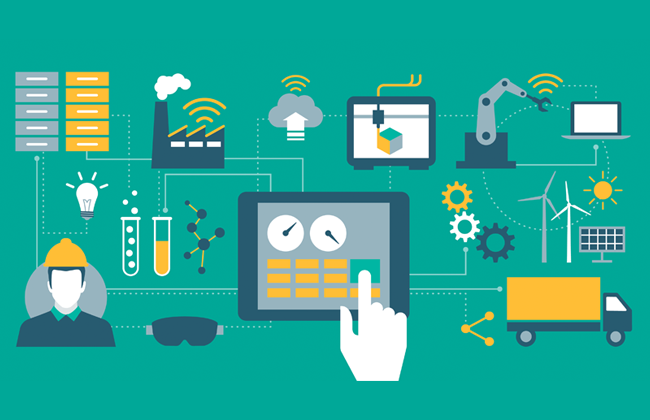These days, artificial intelligence (AI) is everywhere. Programs like ChatGPT have taken the world by storm, highlighting the demand for AI-driven capabilities across a broad range of industries.
But for those in the security field, AI – in the form of video analytics – has been a fact of life for a long time. In fact, as analytics has grown more advanced, cameras equipped with machine learning (ML) and deep learning (DL) technology have become commonplace, putting advanced new capabilities in the hands of organizations across the globe.
Those new capabilities are helping organizations keep their locations and assets better protected than ever – but organizations are now leveraging them in ways far beyond security. Today’s business leaders are using AI-driven analytics capabilities to improve and automate their security processes and generate valuable business intelligence insights that they can use to increase efficiency, streamline operations, and improve their bottom line.
Modern advances in AI and analytics
It’s hard to overstate how far video surveillance technology has come in a relatively short period. Not long ago, cameras were a primarily reactive technology used to record video for later review. (The image of a lone security guard staring at a bank of wall monitors still comes to mind when many of us think of video surveillance.)
[ Also read Security automation: 3 key benefits. ]
Modern solutions have come a long way since then – today’s cameras no longer depend on human operators to notice when a suspicious incident is taking place. Thanks to AI, organizations can deploy a wide range of analytics capabilities to automatically detect and alert potential security events.
That said, it’s important to set appropriate expectations for video analytics and artificial intelligence. AI, ML, and DL have made exciting new things possible – but it’s important not to get caught up in the hype. Understanding how to use the latest and greatest technologies appropriately and effectively is key before deploying them.
For example, at the start of the COVID-19 pandemic, many organizations purchased thermal cameras, believing they could be used for fever detection. However, thermal cameras were not well-suited to that purpose – leading many customers to grow frustrated with the technology.
It’s important to remember these lessons, even as AI grows more powerful.
The impact of AI on security
Processing at the edge has dramatically reduced bandwidth and storage needs, making AI-based surveillance tools more affordable and accessible.
One of the most important developments in AI analytics was the advent of Deep Learning Processing Units (DLPUs) and the subsequent ability to integrate them at the edge. These advanced new chipsets enable cameras to process vast amounts of information at the network edge, allowing organizations to run analytics natively on the devices themselves. This has had a significant impact on the overall cost of analytics, as organizations no longer need to send video feeds to the cloud for analysis. Processing at the network edge has dramatically reduced bandwidth and storage needs, making AI-based surveillance tools more affordable and accessible to organizations of all sizes.
Cameras have also improved, offering higher resolutions, better image quality, and greater light sensitivity. This gives AI clearer images to work from and improves its accuracy when recognizing and classifying objects.
As DLPUs and advanced object detection become standard, organizations can run analytics like license plate recognition, loitering detection, and gunshot detection, while common functions like intruder detection become more reliable as cameras learn to filter out shadows and differentiate between a human being and, say, a deer.
AI can also automate the detection and alert process, meaning security personnel can be notified of a potential incident in progress in real time, reducing response time and allowing security teams to address incidents proactively before they have a chance to escalate.
Applying AI to business needs
In addition to security, AI-driven analytics are now being applied to core business functions. Retailers, for example, are using analytics to track all manner of customer activity, including when customers are most likely to visit the store, which displays draw the most attention, and how they move about the store. This allows them to improve the efficiency of their operations by deploying staff more effectively, gauging the success of displays or marketing campaigns, and eliminating choke points.
Manufacturers can use the same technology to identify defective products on an assembly line or listen for signs that a machine needs maintenance. Hospitals can enforce proper PPE usage and prevent costly slip/trip/fall cases. Across a wide range of industries, AI-enabled cameras are allowing businesses to improve their operational efficiency and generate positive ROI.
For business and technology leaders, this creates a unique opportunity to draw additional value from security investments. The same devices already being used for security purposes can now be used to generate positive ROI for marketing and business intelligence departments, improve workplace safety, and decrease liability.
Businesses across all industries are extracting greater value from their surveillance devices, even as improvements in video compression and edge processing power decrease the overall cost of ownership. From a security and business perspective, there has never been a better time to invest in video surveillance.
Leveraging AI in the future
The video surveillance world is nearing a tipping point – cameras once used exclusively for security purposes are seeing their business applications grow by leaps and bounds. The growth – and accessibility – of AI has been a primary driver, allowing businesses to dramatically improve their security capabilities even as they leverage the same technology to generate new business insights.
As AI continues to evolve, today’s organizations should ensure that they get the most out of their devices as both security solutions and business enablers.
[ Want best practices for AI workloads? Get the eBook: Top considerations for building a production-ready AI/ML environment. ]




